- Joined
- Aug 8, 2019
- Messages
- 4,137
- Points
- 688

Peter, Paul, Maarten, Uwe and Johan many thanks for your visit and interest. Thanks to the others for the likes and also those who just peeping by.
Small update but 4 hours work. 3 pieces of wood. the small one between the timbers and 1 set of timber (zoogstukken)
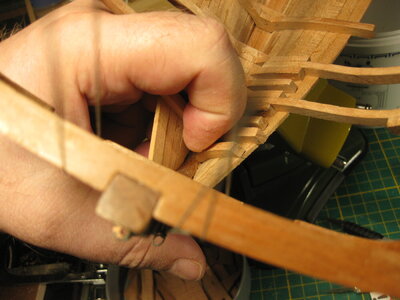
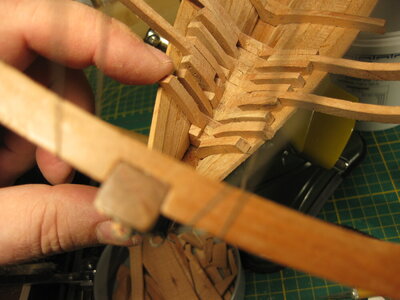
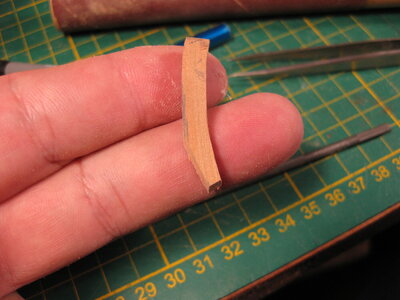
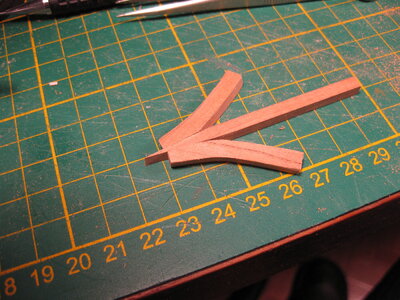
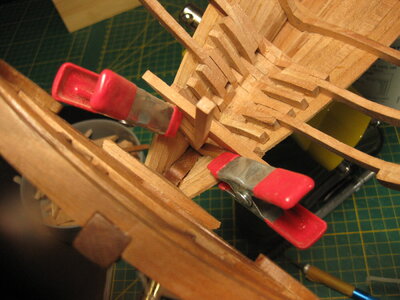
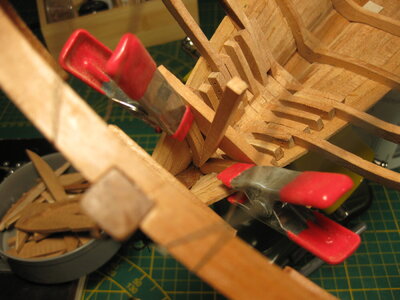
When the glue is dry, I cut of the wig between the timbers on the correct length and glue the also between them. And go on to the next part.
My stack of scratch wood is slinking.
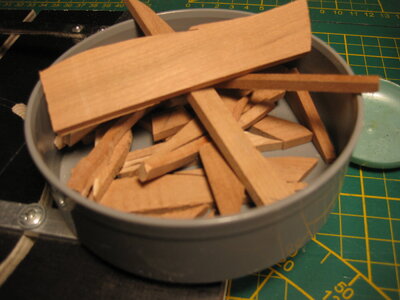
My workspace and the tools I use to make this. Mostly I use files and a round piece of wood with a piece of sandpaper glued to it. But also sometimes the Proxxon MF70 to make angle over a length of a piece of wood. The disk sander to do large parts of sanding and the small nail drill on top also to do precision sanding.
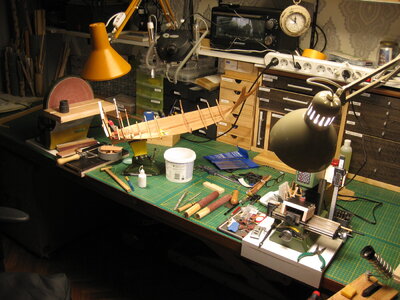
Hope you enjoy this update, could be boring because it is a lot of the same kind of work I show. On the Dutch forum there is a builder (Pauwels) who builds ships in this way and he only used a few hand tools to do this. He got a little wooden box with tools he use. He using basswood/lime wood, that's a little easier to work with then cherry. It is softer. And I think he don't have arthritides in the hands like me.
Thanks for the visit
Small update but 4 hours work. 3 pieces of wood. the small one between the timbers and 1 set of timber (zoogstukken)






When the glue is dry, I cut of the wig between the timbers on the correct length and glue the also between them. And go on to the next part.
My stack of scratch wood is slinking.

My workspace and the tools I use to make this. Mostly I use files and a round piece of wood with a piece of sandpaper glued to it. But also sometimes the Proxxon MF70 to make angle over a length of a piece of wood. The disk sander to do large parts of sanding and the small nail drill on top also to do precision sanding.

Hope you enjoy this update, could be boring because it is a lot of the same kind of work I show. On the Dutch forum there is a builder (Pauwels) who builds ships in this way and he only used a few hand tools to do this. He got a little wooden box with tools he use. He using basswood/lime wood, that's a little easier to work with then cherry. It is softer. And I think he don't have arthritides in the hands like me.
Thanks for the visit

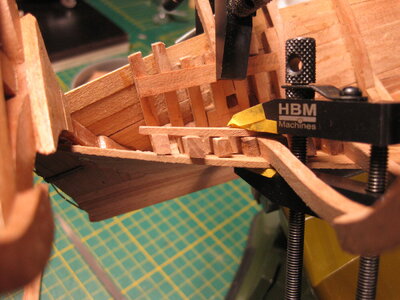
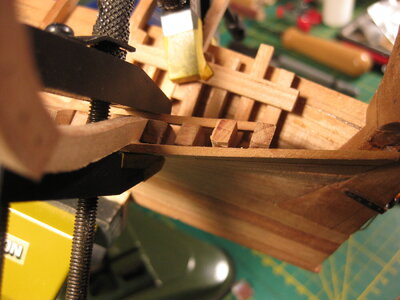
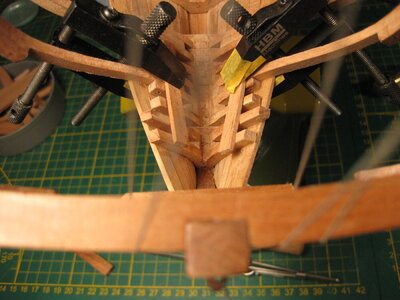
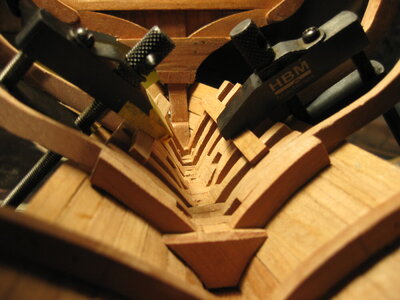
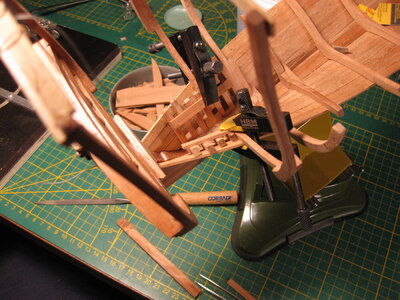

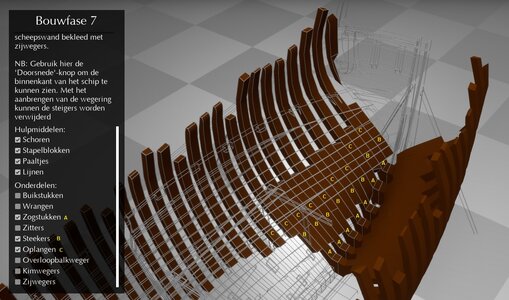
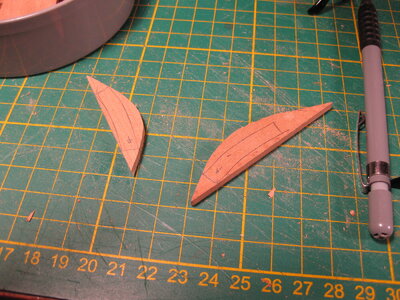
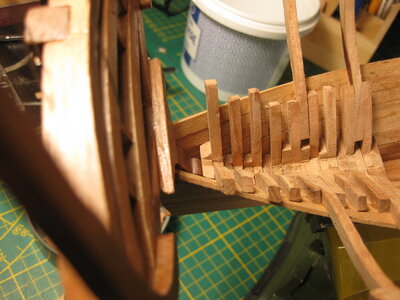
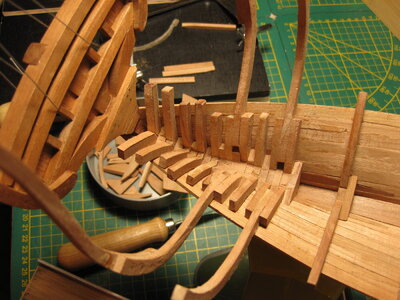
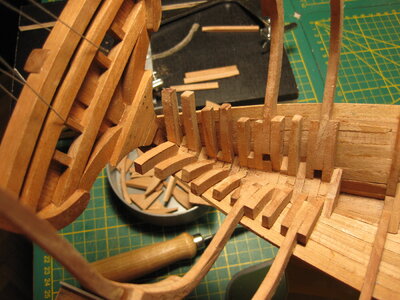
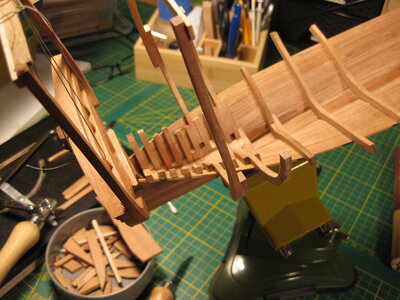
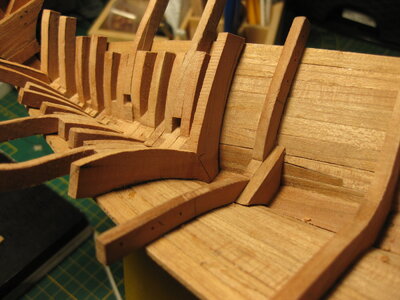
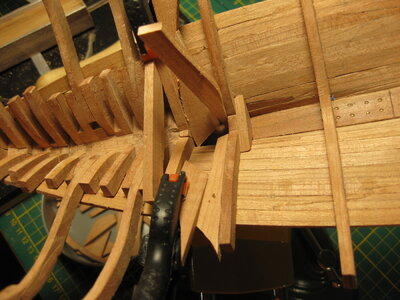



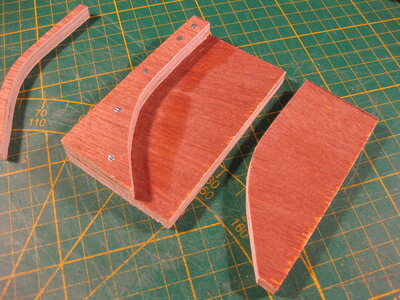
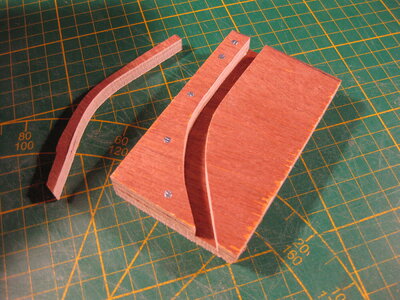
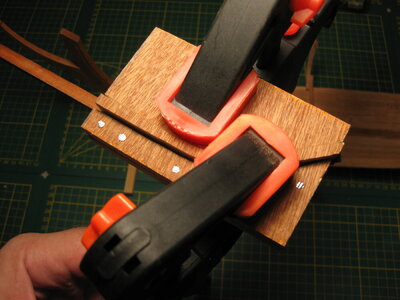
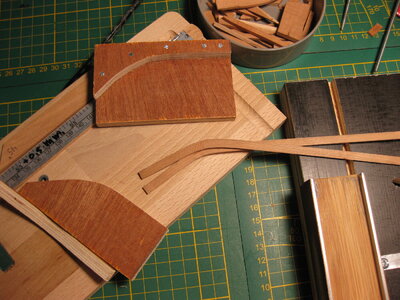
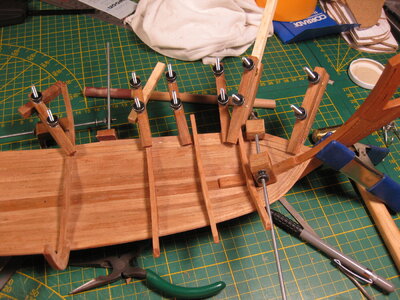
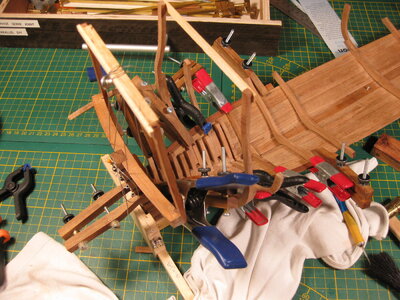
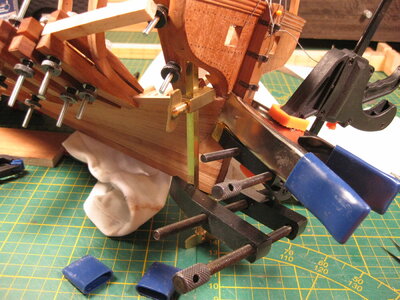
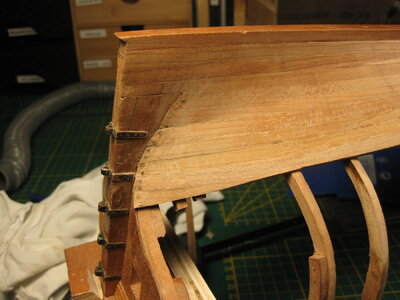
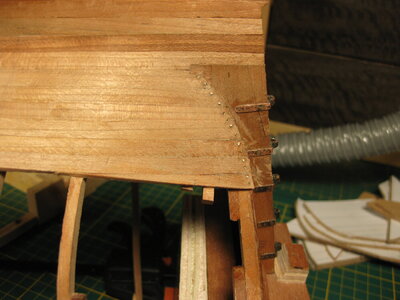
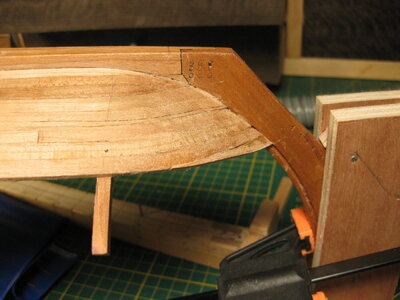
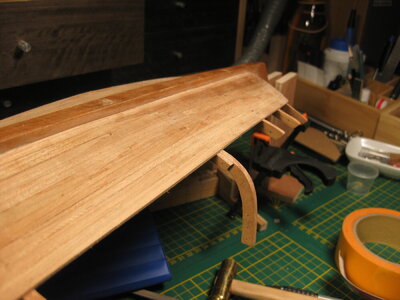
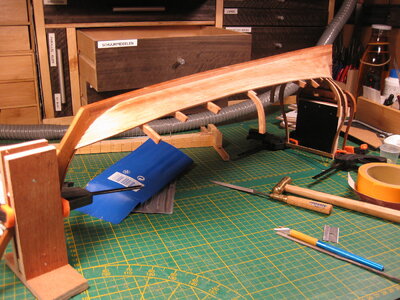
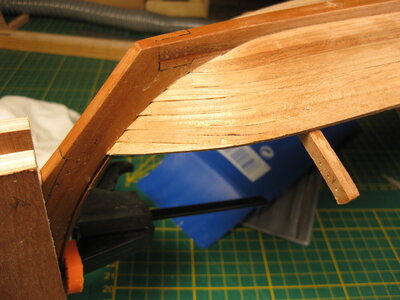

 Oh and make lovely hamburgers, finger licking good.
Oh and make lovely hamburgers, finger licking good.